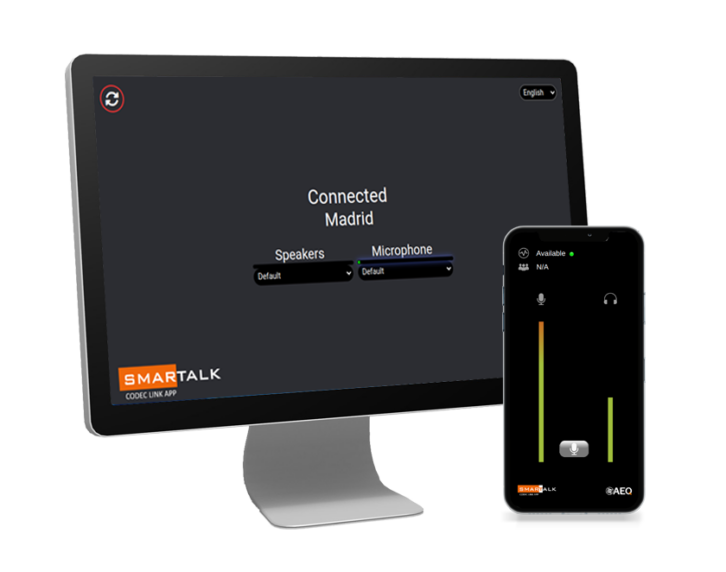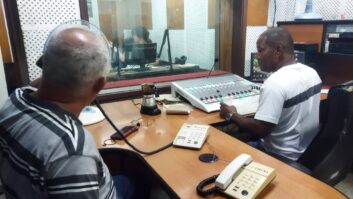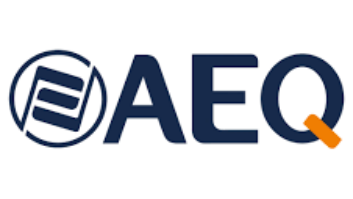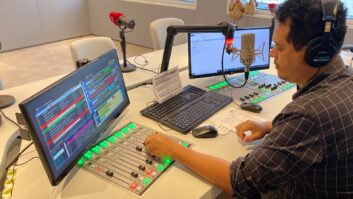AEQ says its new SmarTalk web-based management portal generates links to be sent to a correspondent by email, WhatsApp, QR code or other means.
“When the correspondent clicks on the link, a browser opens and connects to the station’s AEQ Phoenix audio codec, sending Opus-encoded audio to it,” the company states.
“Without further intervention, the audio link between the device’s microphone and speaker or headset and the station’s audio codec is ready.”
It said you don’t need to have an audio codec or install software. “Sporadic collaborators can broadcast from anywhere there is internet connectivity.”
The participant receives the link and clicks it to see a welcome screen. With a second click, the person can participate. “Sending a reporter or a mobile unit, or moving the guest is avoided, as they use their own computer or smartphone to connect and participate.”

Users of AEQ Phoenix audio codecs can request a trial of the SmarTalk service, which is available under a renewable license that can be purchased based on the number of audio codecs per studio to be enabled.
“Subscribers can make any use of the service as they see fit, and send their connection link as many times as they need during the subscription period, for the number of licensed Phoenix audio codecs.”
When a license is activated on a PC at the station, the web application is activated so that SmarTalk users can create the “Guests” or users of remote terminals, send them the links, assign calls to audio codecs and put them on the air. An administrator window is used to register or modify stations, codecs and other users.
If SmarTalk is enabled for a Venus 4 Phoenix codec, individual audio codec channels can be preset to SmarTalk, allowing a studio audio codec to dynamically work with SmarTalk or other portable audio codecs. In other Phoenix audio codecs, channels can be assigned to the service manually.
AEQ says that to ensure availability and low delay, redundant infrastructure was designed across several cloud servers in different regions of the world.
It adds that there are two working modes.
In Guest mode, the most common, the studio sends a link by email, WhatsApp or QR code. Accepting the link opens a welcome screen, and clicking on it registers the user on the operator’s waiting list, to go on air at the right time.
Reporter mode does not require an operator in the studio. “By tapping on the welcome screen, the user remains active in the air on the pre-assigned codec line or the one available at the station.”











